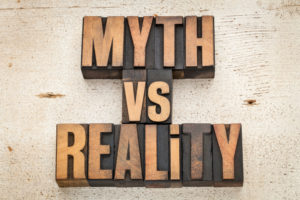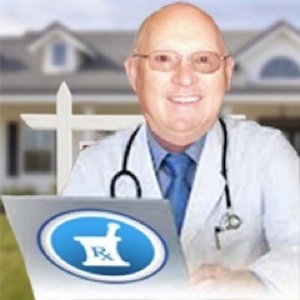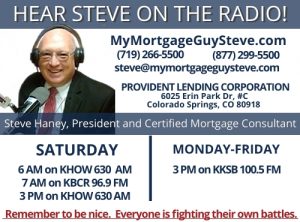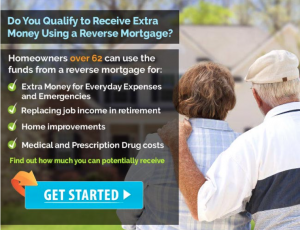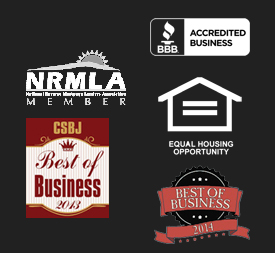Reverse Mortgages: Separating Myth from Fact: Talk to 10 friends about Reverse Mortgages (RMs), and you’ll probably hear 10 tall tales. But most of the stories you’ll hear are due to a lack of understanding of how RMs work, or tales from the past told over and over again from before these mortgages were regulated. Most of the common myths about RMs can be easily dispelled through a little research.
Better protections
People can be hesitant to get an RM for various reasons. For instance, they may not be know about the rules put in place to make the RM a safe financing option.
Non-recourse loan
A common risk that some worry about is that a borrower could end up having to pay back more than the home is actually worth. This is a myth!
Here’s the facts. The family or estate will never owe more on the RM debt than the value of the subject property. Why?
The most popular RM program, called the HECM (Home Equity Conversion Mortgage) is backed by the FHA (the Federal Housing Administration), and is a non-recourse loan. That means Spousal Protection is now in place, designed to protect the RM borrower and spouse.
Here’s how it works. If the borrower is married, both individuals are accounted for in the underwriting decision for an RM. That was not the case a few years ago.
If the borrower’s spouse is not of qualifying age (62) when the RM is taken out, non-recourse allows the non-borrowing spouse to remain in the home after the borrowing spouse’s death.
When getting the loan, the non-borrowing spouse must meet specific guidelines to maintain this protection, however. Furthermore, a non-borrowing spouse can remain on the title.
Now you must qualify
Another major change to the program that protects a borrower is that underwriting requires a full credit, income and property assessment as part of determining borrower suitability. This was not the case prior to April 2015.
Property expenses must be paid
Property charges such as taxes, hazard coverage and homeowner association fees are reviewed for timely payments as well. The intent of this guideline is to minimize property tax and insurance defaults and help to ensure the desired loan is a net benefit for the borrower.
No access in the first 12 months
Another change to help the buyer limits the access of funds during the first 12 months of the loan. This rule helps to ensure that the borrower will have money down the road, and keeps the loan balance from growing rapidly in the early years, thus protecting the future equity position of the borrower.
Cool options
The old RM
Back in the late 1980s and on through the 1990s, RMs were often referred to as “bailout loans” or “loans of last resort.” Because the borrower’s credit and income documentation weren’t checked, it was essentially an equity-driven product. Although that was not always the case, those stereotypes were true back then. Not now.
The new RM
Today, RMs look entirely different, and the old notions have been thrown into the dustbin of history.
No mortgage payment
Now senior borrowers look into RMs to eliminate their monthly home-payment obligation. This release of cash flow allows RM borrowers to instantly free up income for other financial needs, such as medical care, home improvements and entertainment, just to name a few.
The RM can clearly help seniors secure their retirement, allowing them to age in place with the peace of mind of not having a mortgage payment.
Buy a new home
Seniors also use the RM to buy a new home. Seniors are moving, whether it is to downsize or to be closer to family. They can sell their existing home, and use the proceeds for a downpayment on a new home as part of a HECM for purchase loan. That means no monthly mortgage payments on their new home!!! A major draw for senior borrowers.
By taking advantage of an RM on their new home, seniors can often buy more home than they thought they could afford, or otherwise retain key retirement assets for the future.
Different from a regular mortgage
A common myth surrounding an RM is that people think it’s the same as a HELOC (home equity line of credit). It’s not! A HELOC is another form of credit that uses the home as collateral. Here, a borrower is pre-approved for a certain spending amount based on income and credit scores.
This borrower can draw on HELOC credit as needed and within the terms of the loan, similar to using a credit card. They are then required to make regular payments for a fixed term.
But there are distinct differences between the RM and HELOC programs. The RM has a clear advantage over the HELOC in that the borrower is freed from making mortgage payments.
The bank doesn’t own the home
Who owns the home after am RM is closed? Many myths about this subject! When a borrower takes out am RM, the title for the home remains with the borrower. The bank doesn’t own the home.
The RM becomes due once the borrower:
- no longer occupies the home as their principal residence
- dies or moves out
- fails to pay the property taxes or insurance
- fails to keep up with general home maintenance
When one of these events occurs, the lender will declare the RM due and payable. What has been borrowed, plus interest, is due to the lender at that time, and any equity remains with the borrower.








